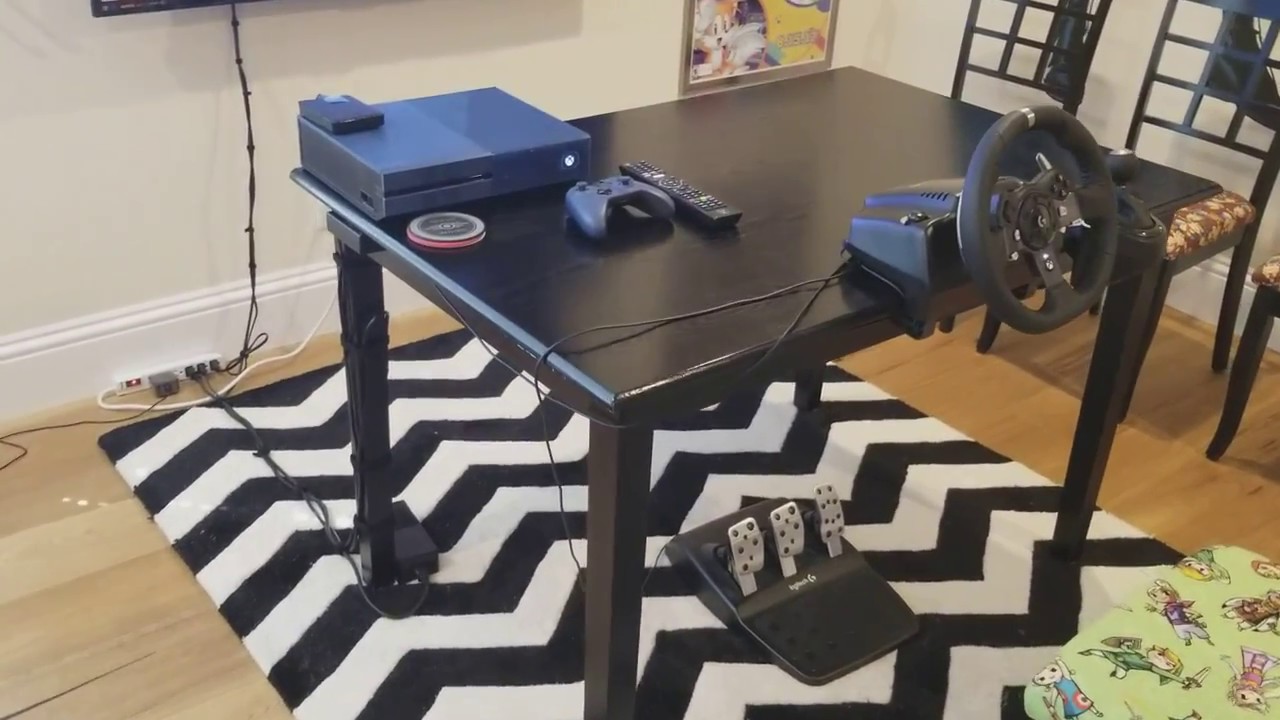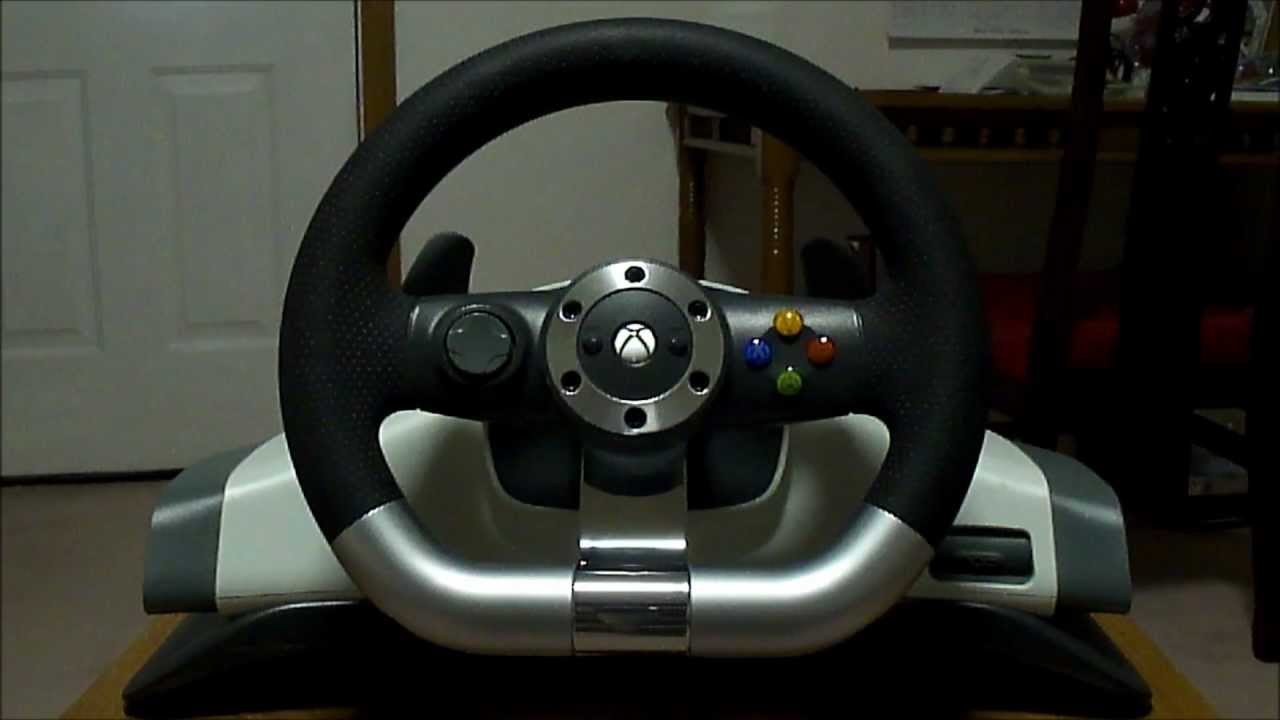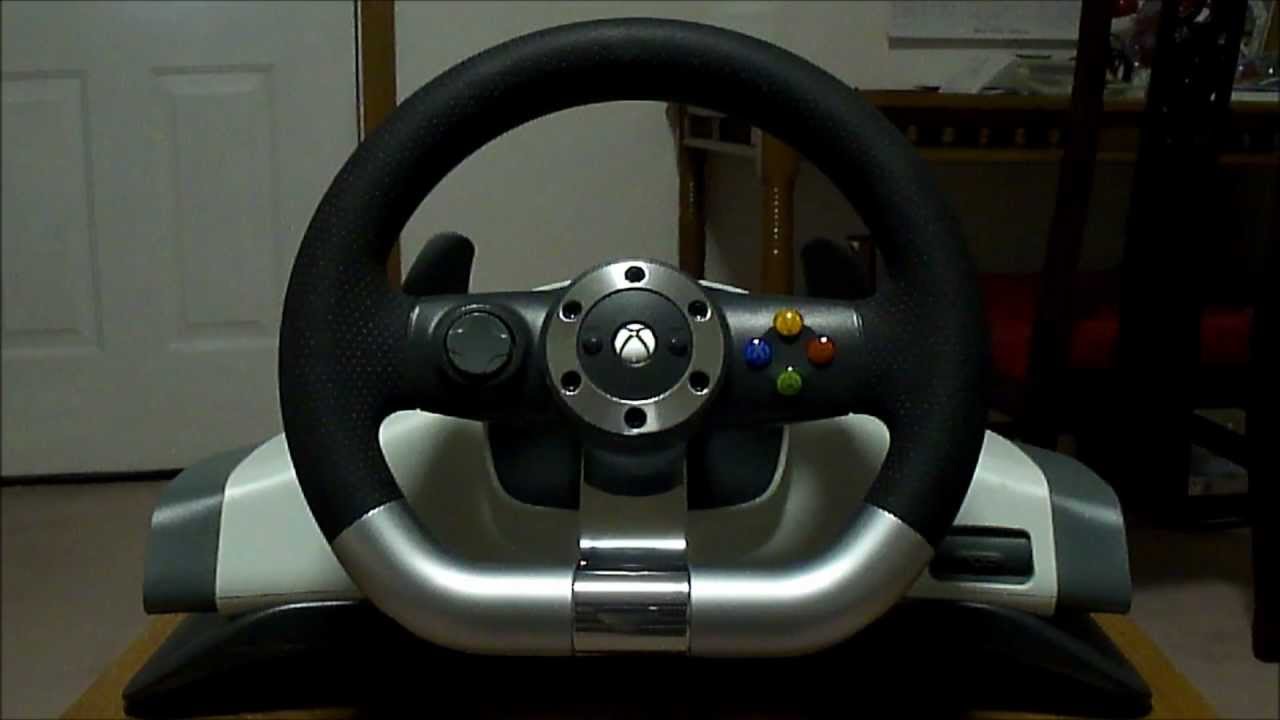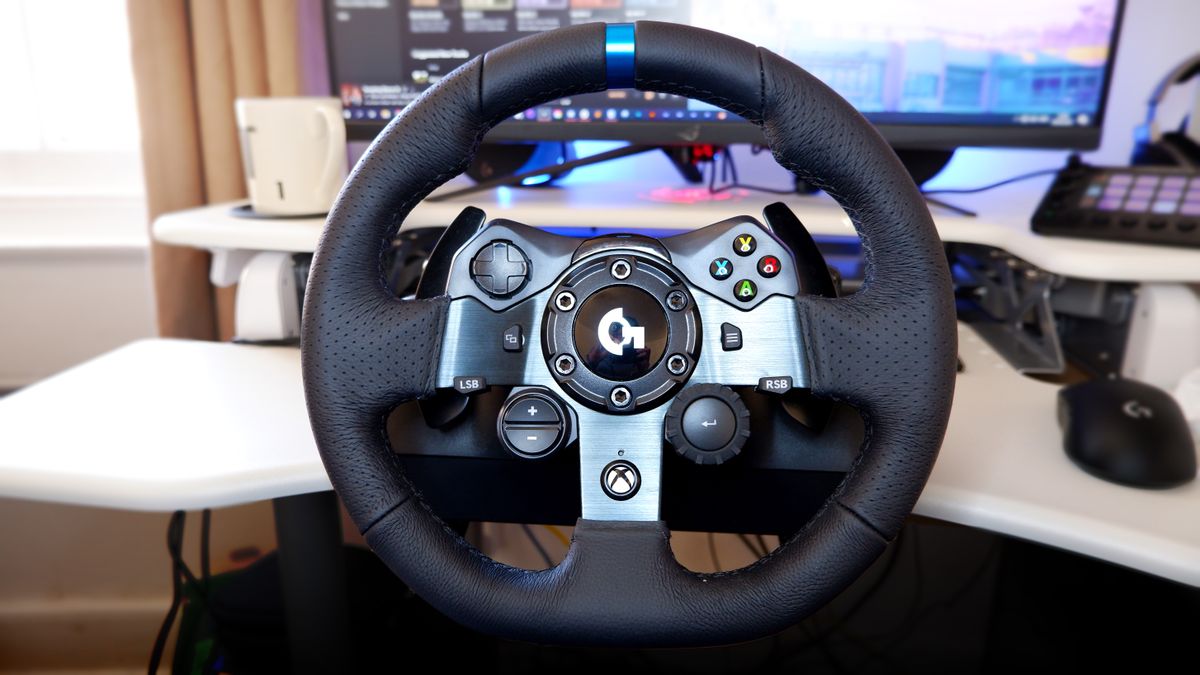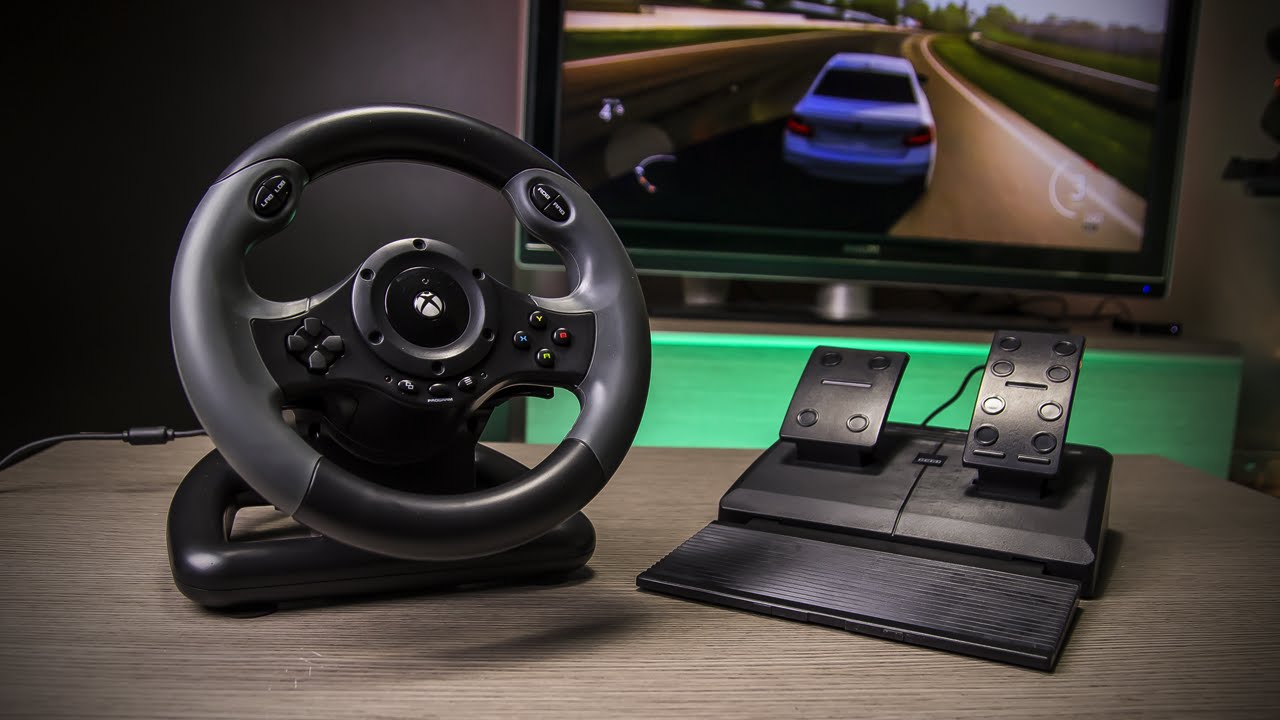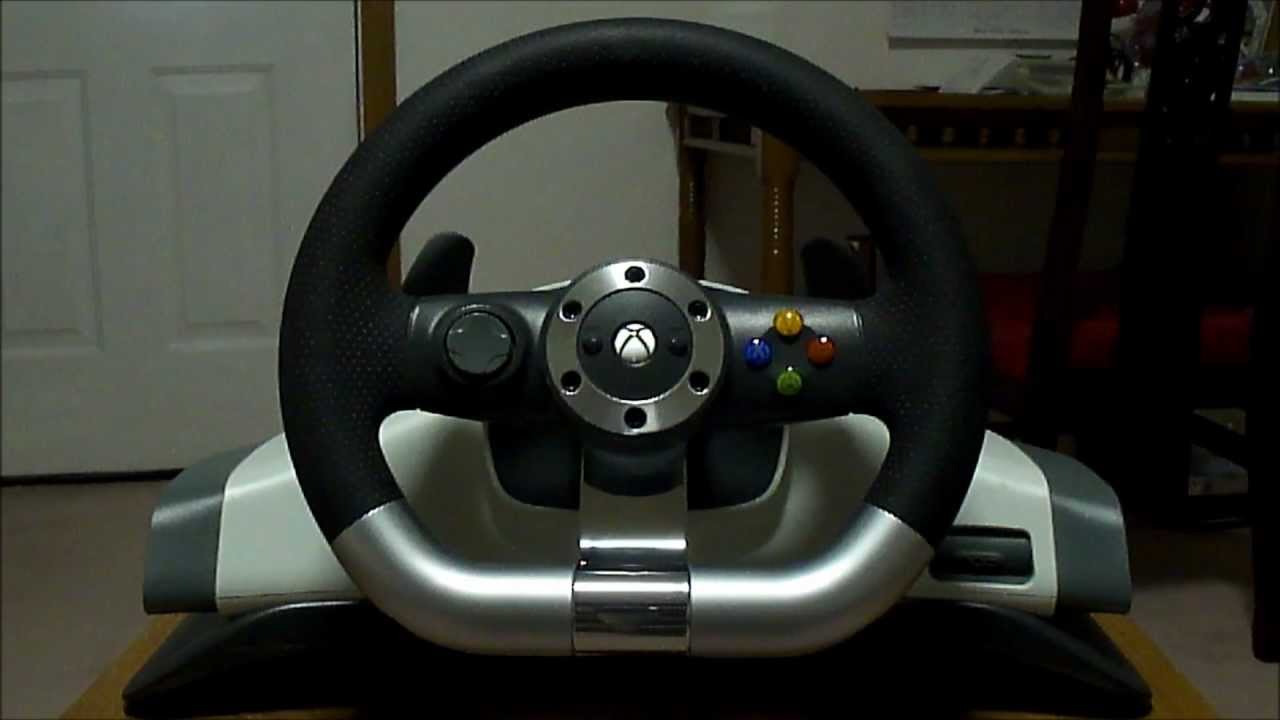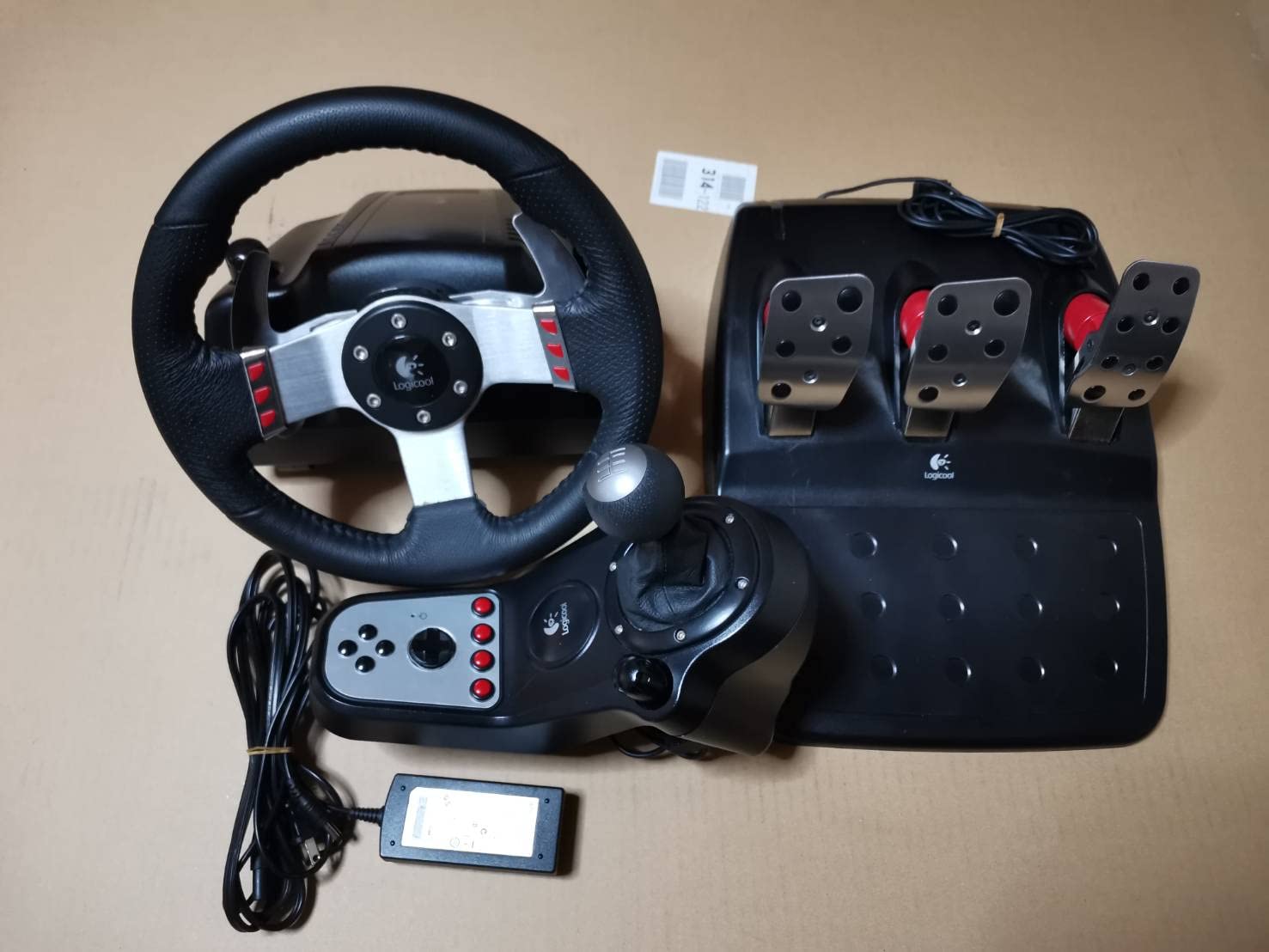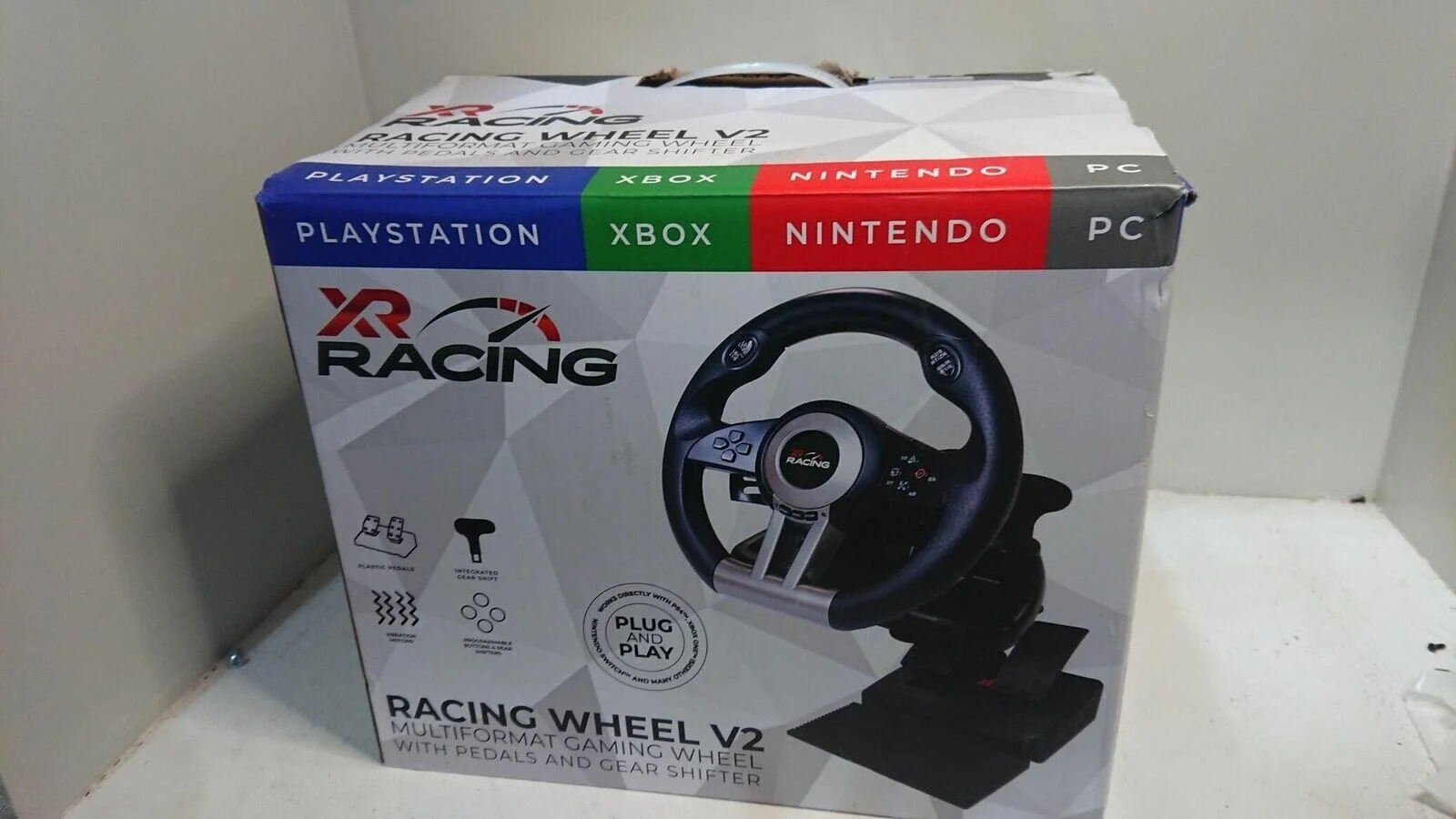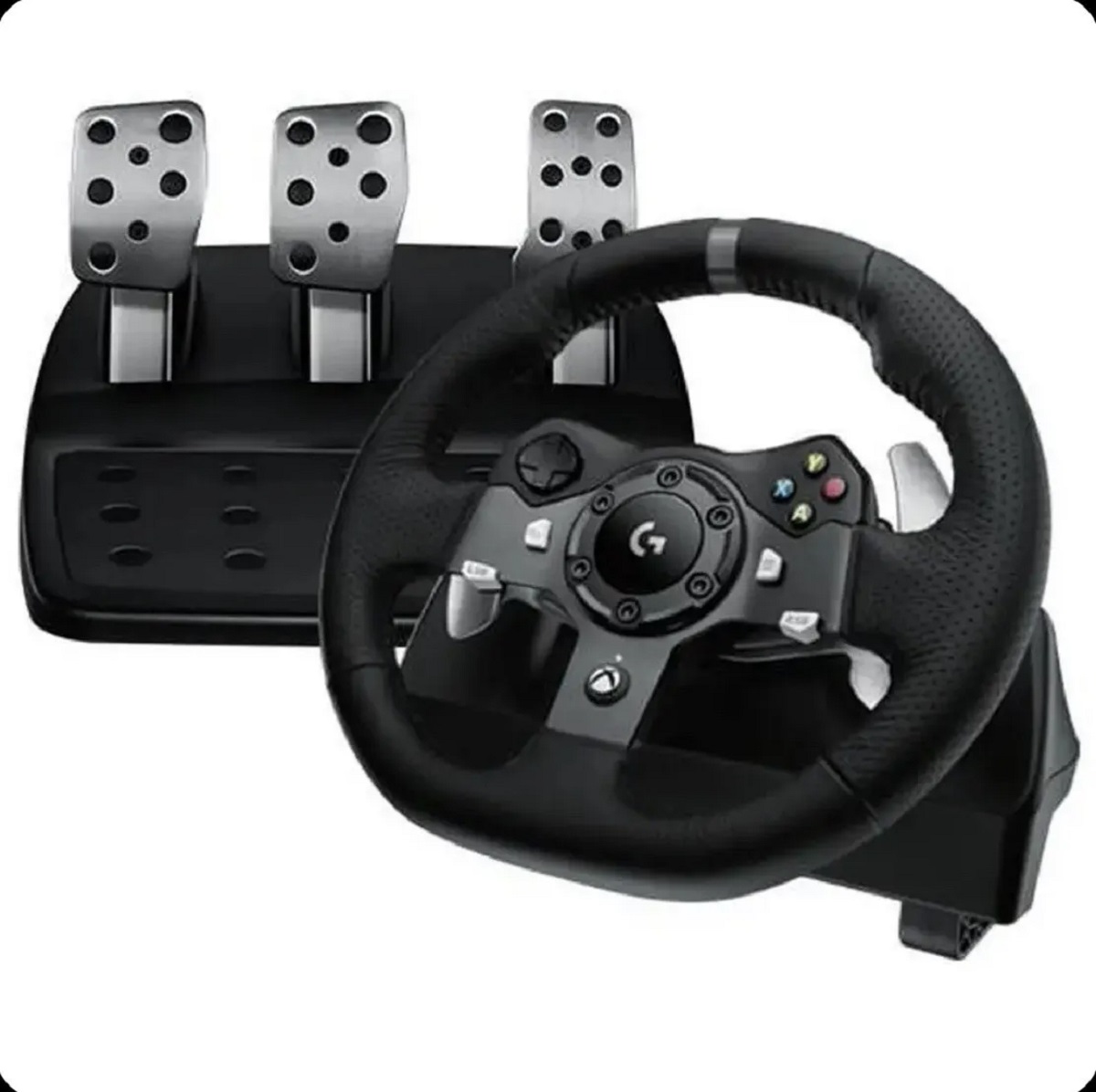Introduction
Are you a passionate racing game enthusiast looking to elevate your gaming experience on Xbox? Setting up a racing wheel can immerse you in the thrilling world of virtual racing, offering a more realistic and engaging gameplay experience. Whether you're a casual gamer or a dedicated racing aficionado, the right racing wheel can add a new dimension to your gaming setup.
In this comprehensive guide, we'll walk you through the process of setting up a racing wheel on your Xbox, from selecting the ideal racing wheel for your needs to calibrating and testing it for optimal performance. By following these step-by-step instructions, you'll be ready to hit the virtual racetrack with precision control and unparalleled immersion.
Embracing the world of virtual racing with a dedicated racing wheel opens up a realm of possibilities, allowing you to feel every turn, drift, and acceleration as if you were behind the wheel of a real race car. Whether you're into arcade-style racing, realistic simulations, or competitive online multiplayer, a racing wheel can revolutionize the way you experience racing games on Xbox.
So, let's dive into the intricacies of setting up a racing wheel on Xbox, ensuring that you're fully equipped to unleash your racing skills and immerse yourself in the heart-pounding action of virtual motorsport. Whether you're a seasoned racer or just getting started, this guide will equip you with the knowledge and confidence to optimize your racing wheel setup and take your gaming experience to the next level.
Choosing the Right Racing Wheel
Before delving into the setup process, it’s crucial to select a racing wheel that aligns with your gaming preferences and budget. With a myriad of options available, ranging from entry-level to high-end racing wheels, making an informed choice is essential to ensure an immersive and enjoyable gaming experience.
When considering a racing wheel, factors such as compatibility, force feedback, pedal quality, and additional features play a pivotal role in the decision-making process. For Xbox compatibility, it’s imperative to choose a racing wheel specifically designed for the platform, ensuring seamless integration and optimal performance.
Force feedback, the technology that simulates the tactile sensations of driving, is a key aspect of a racing wheel. High-quality force feedback can provide realistic resistance and responsiveness, enhancing the overall immersion and control in racing games. Additionally, the quality of the pedals significantly contributes to the authenticity of the driving experience. Look for racing wheels with responsive and durable pedals, offering realistic feedback for precise acceleration, braking, and clutch control.
Furthermore, consider additional features such as programmable buttons, paddle shifters, and adjustable wheel sensitivity to tailor the racing wheel to your specific gaming style and preferences. Whether you prioritize customization options, ergonomic design, or advanced features like dual-motor force feedback, selecting a racing wheel that resonates with your gaming needs is paramount.
For budget-conscious gamers, entry-level racing wheels can provide a solid foundation for immersive gameplay, offering essential features at an accessible price point. Conversely, enthusiasts seeking a premium racing experience may opt for high-end racing wheels with advanced force feedback systems, precision engineering, and customizable components.
By carefully evaluating the compatibility, features, and budget considerations, you can make an informed decision when choosing the right racing wheel for your Xbox gaming setup. The selected racing wheel will serve as the gateway to an unparalleled virtual racing experience, elevating your gameplay to new heights of realism and excitement.
Connecting the Racing Wheel to Xbox
Once you’ve chosen the ideal racing wheel for your gaming needs, the next step is to seamlessly connect it to your Xbox console. The process of connecting the racing wheel involves a few straightforward steps, ensuring that you’re ready to dive into the immersive world of virtual racing without any technical hurdles.
First and foremost, it’s essential to verify the compatibility of the racing wheel with your Xbox model. Most modern racing wheels are designed to be compatible with Xbox One and Xbox Series X|S consoles, offering plug-and-play functionality for a hassle-free setup process. Ensure that the racing wheel’s compatibility extends to your specific Xbox console to guarantee seamless integration.
Begin by locating the USB port on your Xbox console, which is typically located on the front or back panel. Connect the racing wheel’s USB cable to the USB port, ensuring a secure and snug fit. The USB connection serves as the primary interface between the racing wheel and the Xbox console, facilitating data transmission and power supply to the peripheral device.
Once the racing wheel is connected via USB, the Xbox console should automatically recognize the peripheral device, prompting the system to configure the necessary drivers and settings for optimal functionality. In some cases, you may need to navigate to the Xbox settings menu to verify the detection of the racing wheel and ensure that it’s properly recognized by the console.
Additionally, if your racing wheel features wireless connectivity, follow the manufacturer’s instructions to pair the device with the Xbox console using Bluetooth or proprietary wireless technology. Wireless racing wheels offer enhanced flexibility and freedom of movement, eliminating the constraints of wired connections while delivering responsive and lag-free performance.
By following these straightforward steps, you can effortlessly connect your chosen racing wheel to your Xbox console, paving the way for an immersive and exhilarating virtual racing experience. With the racing wheel seamlessly integrated into your gaming setup, you’re one step closer to harnessing the full potential of precision control and realistic feedback in your favorite racing games.
Setting Up the Racing Wheel Settings
After successfully connecting the racing wheel to your Xbox console, it’s time to fine-tune the settings to optimize the performance and responsiveness of the peripheral device. Customizing the racing wheel settings allows you to tailor the control sensitivity, force feedback strength, button mapping, and other parameters to suit your gaming style and preferences.
Begin by accessing the Xbox settings menu and navigating to the “Devices & connections” or “Accessories” section, where you can locate the specific settings for the connected racing wheel. Depending on the model of the racing wheel and its compatibility with the Xbox console, you may find dedicated options for calibrating and customizing the device’s settings.
One of the crucial settings to adjust is the wheel sensitivity, which determines the responsiveness of the racing wheel to your steering inputs. Fine-tuning the sensitivity allows you to achieve precise control over your virtual vehicle, striking a balance between agility and stability based on your driving preferences and the type of racing games you enjoy.
Furthermore, if your racing wheel features force feedback, explore the settings related to force intensity, vibration levels, and dynamic response. Adjusting the force feedback settings can enhance the realism of the driving experience, simulating the tactile sensations of the road surface, vehicle dynamics, and environmental effects to immerse you in the virtual world of racing.
Button mapping and programmable controls are another aspect of the racing wheel settings that offer customization opportunities. Assigning specific functions, such as gear shifting, handbrake, or view adjustments, to the wheel’s buttons and paddles can streamline your gameplay and provide quick access to essential commands without relying on the standard Xbox controller.
For racing wheels equipped with adjustable pedals, explore the settings related to pedal sensitivity, dead zones, and calibration to ensure that the pedal inputs align with your desired level of responsiveness and precision during acceleration, braking, and clutch control.
By meticulously configuring the racing wheel settings to align with your gaming preferences, you can unlock the full potential of the peripheral device, harnessing its capabilities to deliver a tailored and immersive racing experience. With the settings optimized to your liking, you’re poised to take on the virtual racetrack with confidence and precision, fully immersed in the thrilling world of virtual motorsport.
Calibrating the Racing Wheel
Calibrating your racing wheel is a crucial step in ensuring optimal performance and responsiveness, aligning the device with your specific gaming environment and preferences. Through calibration, you can fine-tune the steering, pedal, and force feedback inputs, eliminating potential inaccuracies and enhancing the overall precision of the racing wheel.
Most racing wheels offer built-in calibration utilities, accessible through the manufacturer’s dedicated software or the settings menu on the Xbox console. Begin by accessing the calibration options, where you’ll typically find tools to adjust the wheel’s centering, rotation range, pedal sensitivity, and force feedback parameters.
Start by calibrating the wheel’s centering, which establishes the neutral position of the steering axis. Ensuring that the wheel is accurately centered is essential for maintaining consistent and predictable steering inputs during gameplay, preventing any unintended drift or misalignment that may compromise your control over the virtual vehicle.
Next, adjust the rotation range of the racing wheel to align with the specific requirements of your preferred racing games. Some games may benefit from a wider steering angle, allowing for enhanced maneuverability and precise cornering, while others may demand a narrower range for more focused and nuanced steering inputs.
Calibrating the pedal inputs is equally important, as it enables you to fine-tune the sensitivity and travel range of the accelerator, brake, and clutch pedals. By calibrating the pedals, you can ensure that the input signals accurately reflect your intended actions, providing consistent and responsive control over the vehicle’s acceleration, deceleration, and gear shifting.
If your racing wheel features force feedback, utilize the calibration tools to adjust the force intensity, vibration levels, and dynamic response to suit your preferences and the demands of different racing scenarios. Fine-tuning the force feedback parameters allows you to experience lifelike tactile sensations, enhancing the immersion and realism of the virtual driving experience.
Throughout the calibration process, it’s essential to test the racing wheel’s inputs in conjunction with your preferred racing games, making incremental adjustments to achieve the desired levels of steering precision, pedal responsiveness, and force feedback realism. By meticulously calibrating the racing wheel, you can tailor its performance to your exact specifications, ensuring a seamless and immersive gaming experience that reflects your unique driving style and preferences.
Testing the Racing Wheel
Once you’ve completed the setup, calibration, and customization of your racing wheel, it’s time to put it to the test and experience the exhilarating world of virtual racing with precision control and immersive feedback. Testing the racing wheel involves engaging in gameplay scenarios that allow you to assess its responsiveness, accuracy, and overall compatibility with your favorite racing titles.
Begin by launching a racing game that showcases a diverse range of driving conditions, such as varying road surfaces, weather effects, and vehicle dynamics. Select a game mode that enables you to explore the capabilities of the racing wheel across different racing disciplines, from high-speed circuit racing to off-road challenges and drifting competitions.
As you delve into the gameplay, pay close attention to the steering inputs and the wheel’s responsiveness to your commands. Evaluate the accuracy of the steering wheel’s movements, ensuring that it faithfully translates your actions into precise and consistent steering adjustments within the game environment. Assess the alignment between the physical movements of the racing wheel and the virtual representation on screen, verifying that they are in perfect sync.
Test the force feedback capabilities of the racing wheel by navigating through diverse terrains, encountering varying levels of traction, and experiencing dynamic environmental effects. The force feedback should convey the nuances of the virtual driving experience, simulating the tactile sensations of the road surface, vehicle weight transfer, and subtle cues that enhance your awareness and immersion in the game world.
Explore the functionality of the pedals, assessing their responsiveness, travel range, and consistency in replicating your intended acceleration, braking, and clutch control. Engage in scenarios that demand precise pedal inputs, such as braking zones, throttle modulation through corners, and smooth gear transitions, to evaluate the pedal set’s performance under different driving conditions.
During the testing phase, take note of any areas that may require further adjustment or fine-tuning, such as steering sensitivity, force feedback strength, or pedal calibration. Make incremental changes to the racing wheel settings based on your observations, aiming to achieve a seamless and intuitive interface that mirrors your real-world driving instincts and preferences.
By thoroughly testing the racing wheel across a spectrum of racing challenges and environments, you can gain valuable insights into its performance, uncovering its strengths and areas for potential refinement. The testing phase serves as an opportunity to fine-tune the racing wheel to perfection, ensuring that it seamlessly integrates with your gaming experience and elevates your virtual racing pursuits to new heights of realism and excitement.
Conclusion
Embarking on the journey to set up a racing wheel on your Xbox has unlocked a world of immersive gaming experiences, allowing you to delve into the heart-pounding excitement of virtual racing with unparalleled control and realism. By carefully selecting the right racing wheel for your gaming preferences, seamlessly connecting it to your Xbox console, and fine-tuning its settings to perfection, you’ve paved the way for an exhilarating and immersive gaming journey.
Choosing the ideal racing wheel involved considering factors such as compatibility, force feedback, pedal quality, and additional features, ensuring that the selected peripheral device aligns seamlessly with your gaming aspirations and budget considerations. The process of connecting the racing wheel to your Xbox console was straightforward, leveraging USB or wireless connectivity to establish a seamless interface that sets the stage for precision control and immersive feedback.
Delving into the intricacies of setting up the racing wheel settings enabled you to tailor the control sensitivity, force feedback strength, button mapping, and pedal calibration to suit your unique gaming style and preferences. By customizing the racing wheel settings, you’ve unlocked its full potential, ensuring that it aligns perfectly with your virtual racing pursuits and provides an intuitive and immersive interface for your gaming endeavors.
Calibrating the racing wheel allowed you to fine-tune the steering, pedal, and force feedback inputs, eliminating potential inaccuracies and enhancing the overall precision of the peripheral device. Through meticulous calibration, you’ve achieved a level of responsiveness and accuracy that mirrors your real-world driving instincts, ensuring a seamless and authentic virtual racing experience.
Finally, testing the racing wheel across a diverse range of gameplay scenarios provided valuable insights into its performance, responsiveness, and compatibility with your preferred racing titles. By thoroughly assessing its capabilities and making incremental adjustments based on your observations, you’ve refined the racing wheel to perfection, ensuring that it seamlessly integrates with your gaming experience and delivers an unparalleled level of control and immersion.
As you prepare to embark on your virtual racing adventures, armed with a meticulously set up and calibrated racing wheel, you’re poised to conquer the virtual racetrack with confidence and precision. The immersive world of virtual motorsport awaits, offering a thrilling and authentic driving experience that reflects your unique gaming style and passion for racing. With your racing wheel setup optimized to perfection, the excitement of virtual racing is at your fingertips, ready to transport you into a realm of exhilarating competition and adrenaline-fueled victories.







